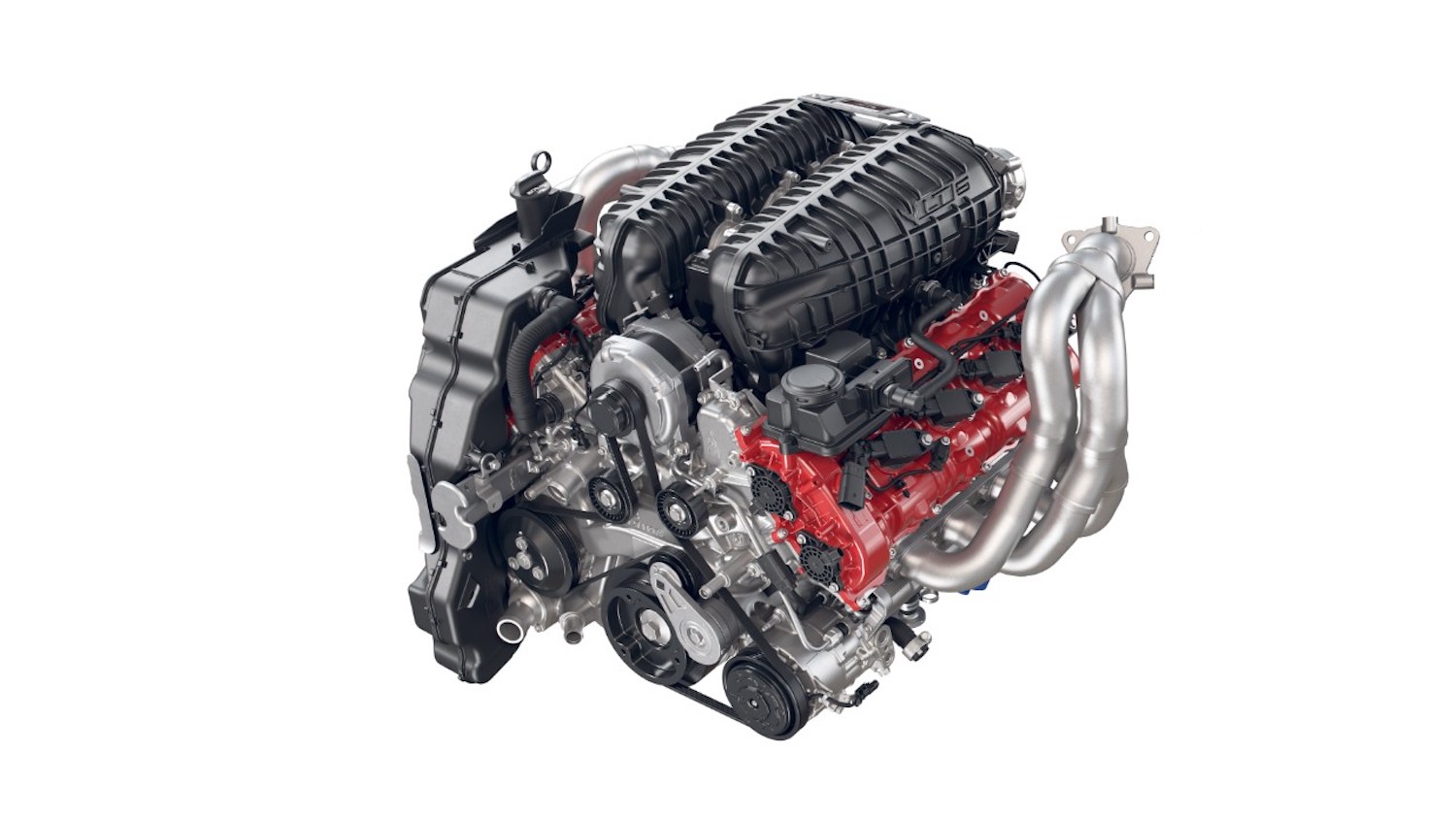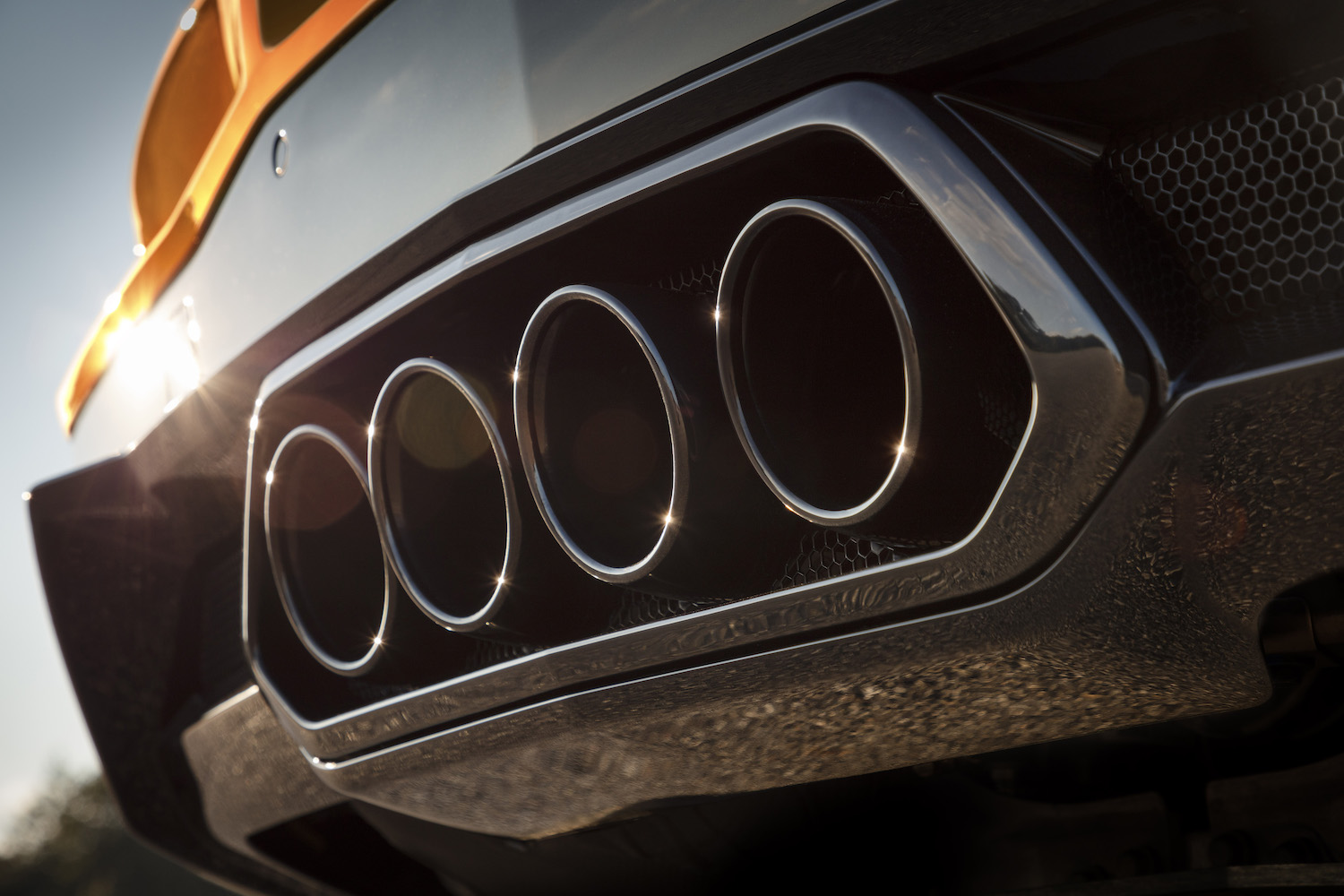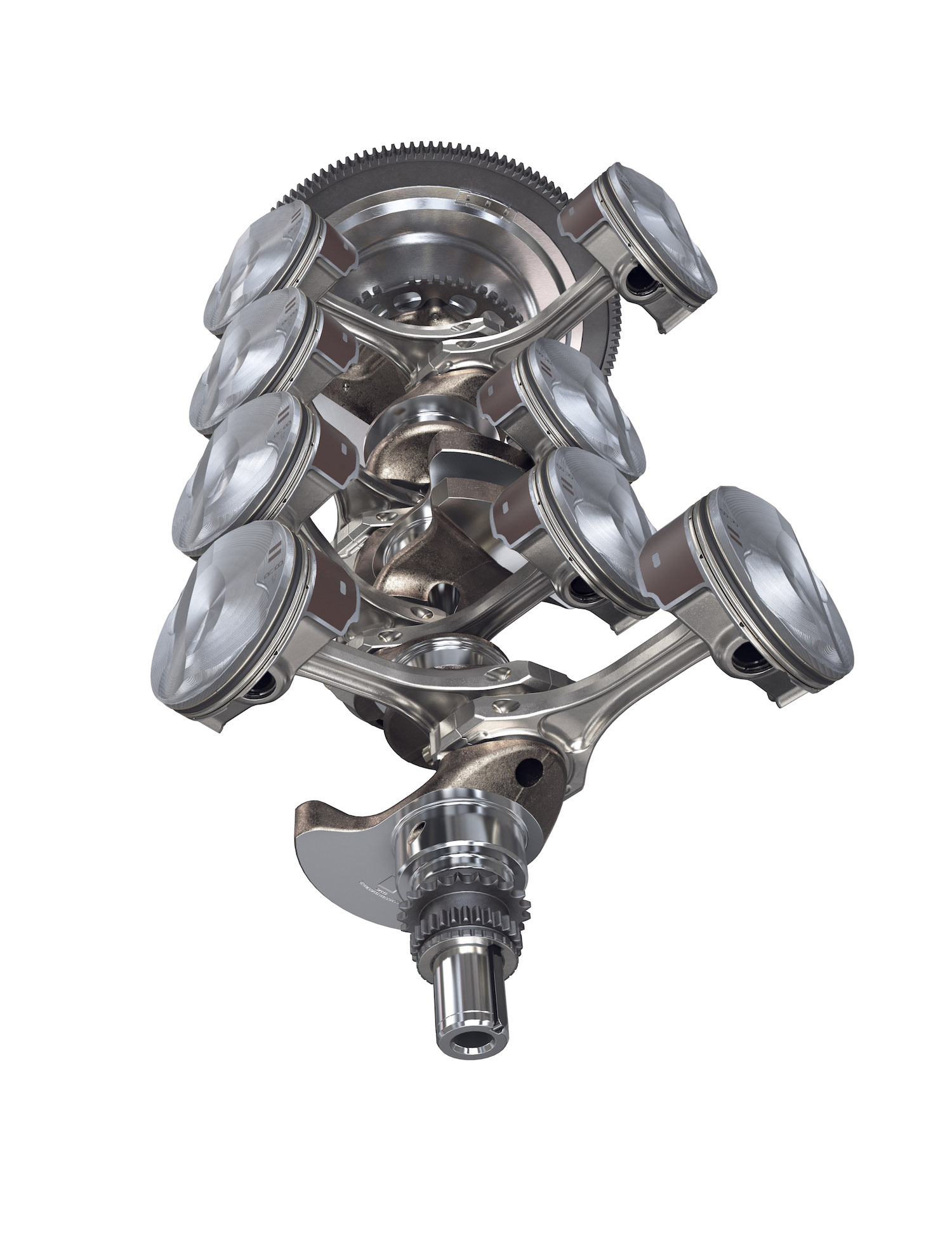
The Exotic Car Secret Behind The 670 Horsepower Engine In The 2023 Corvette Z06
Yesterday, Chevrolet revealed the all-new 2023 Corvette Z06. This mid-engine Chevy supercar features the most powerful naturally-aspirated V8 ever. The all-new 327 cubic-inch LT6 makes 870 horsepower–without a supercharger. Chevrolet Performance achieved this feat by building the world’s largest flat-plane crankshaft engine. A flat-plane crank engine is the secret to many supercars’ power. But what exactly is a flat-plane crankshaft V8?
What is a flat-plane crank engine?

In a flat-plane crankshaft engine, the opposing cylinder banks essentially function as two separate inline engines that take turns firing.
With a typical V8 layout, one cylinder fires every 90 degrees. In a standard V6 or V12, one cylinder fires at 60 degrees. This continuous firing keeps the engine running smoothly, especially at low RPMs. But the 60 or 90-degree interval means engineers must mix the firing order between the two cylinder banks.
In a flat-plane crank engine, a cylinder fires once every 180 degrees. This allows the left and right cylinder banks to take turns firing. Thus, with every combustion cycle alternating between the left and right sides of the engine, the engine can spin faster. For this reason, flat-plane crank engines are common in exotic European cars. Chevrolet brought the technology to the U.S. with the 2023 Corvette Z06.
This engine type gets its name from its crankshaft shape. A traditional crankshaft looks like a cross when viewed along its axis. But a flat-plane crankshaft alternates between upper and lower rod-bearing journals. The result looks like a flat plane when viewed along its axis.
Exhaust ‘scavenging’ unlocks high RPMs

When a traditional engine fires two cylinders on the same bank, one after the other, exhaust gas jams up in that side’s manifold.
In a flat-plane crank engine, combustion alternates between the cylinder banks. Thus, the exhaust gas has the maximum time to escape the manifold as the opposing bank fires. This actually creates a vacuum that helps the next cylinder along. This positive phenomenon is called “scavenging.” It is beneficial at high RPMs. This is one of the reasons the 2023 Corvette Z06 redlines at 8,600 RPMs.
In addition, with an even firing order, every cylinder in the new flat-plane V8 can make identical power. This allows a technician to tune the camshaft and the valves as aggressively as possible without overstressing any one cylinder.
Flat-plane crank engine downsides

There is one significant downside to a flat-plane crank engine. It is the reason the flat-plane engine design fell out of favor for most uses.
When an engine fires more often in each rotation, it spins smoothly. For example, in a common, cross-plane V8, the engine can fire once every 90 degrees of crankshaft spin. In a flat-plane crank engine, the cylinders can only fire every 180 degrees.
In the past, flat-plane engines have suffered from increased vibration and noise. Increased vibration can make a car less comfortable. It can also reduce the engine’s life. For this reason, modern flat-plane crank engines have typically been reserved for supercars and boutique hypercars. Chevrolet aims to solve this engineering problem with the 2023 Corvette Z06.
Chevrolet attempts to reduce vibration with 2023 Corvette Z06 engines that are ‘race car tight’

With the 2023 Corvette Z06, Chevrolet is attempting to address the noise, harshness, and vibration problems associated with the flat-plane crankshaft engine. The automaker is meeting the engineering problem with two complementary solutions. The first is precise manufacturing. The second is leveraging modern materials to reduce the engine’s rotating mass.
Tadge Juechter is the Corvette Executive Chief Engineer. Juechter explained, “This engine runs to 8,600 RPM. That’s by far the quickest spinning engine we’ve ever done. The only way you do that is to have extremely precise manufacturing.” Chevrolet’s answer was to have each LT6 hand-built by a technician at the Bowling Green, Kentucky plant. Jeuchter bragged, “The manufacturing tolerances in this engine are race car tight.”
Firstly, a flat-plane crankshaft is lighter than a cross-plane crankshaft. This is because it does not need counterweights, like a cross-plane crankshaft does. In addition, technicians assemble each LT6 with aluminum forged pistons and titanium connecting rods. The result is a very low rotating mass in the V8 engine. This low mass allows the engine to build RPMs quickly while minimizing vibration. Chevrolet enabled this mass to rotate even quicker with a dry sump lubrication system.
The 2023 Camaro Z06 LT6 is a historic achievement. This supercar-caliber engine is breathing new life into an American classic.



